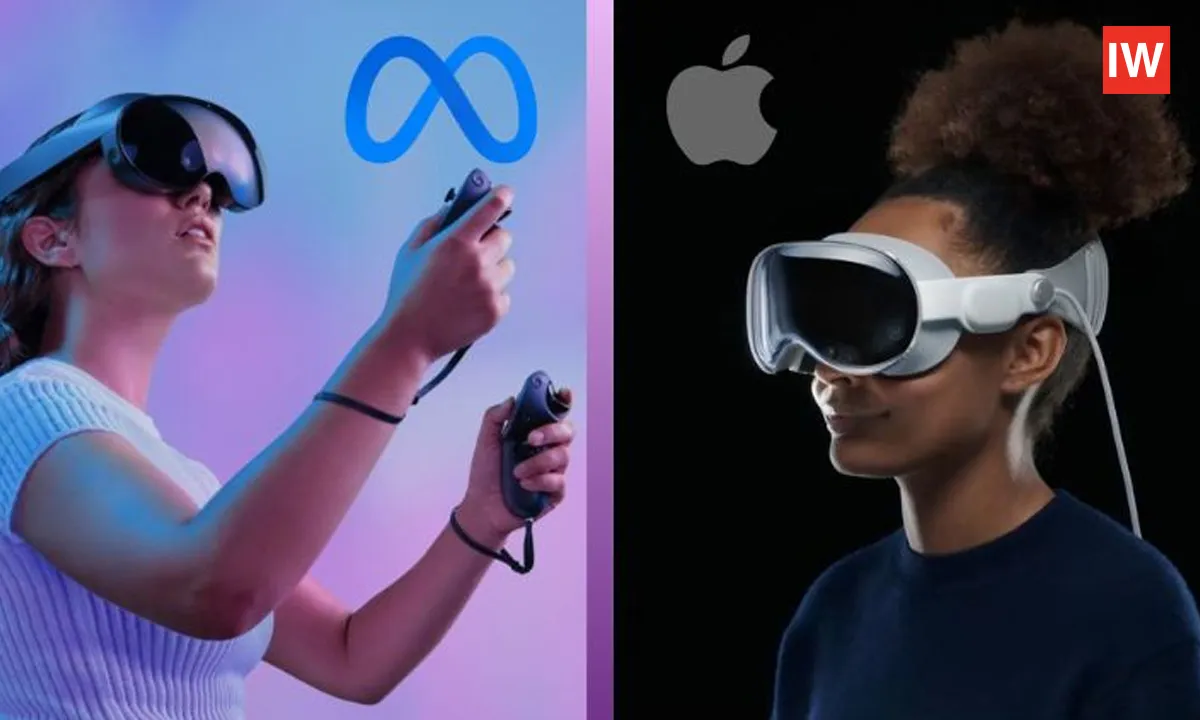Technology companies like Meta (formerly Facebook) and Apple are working on augmented reality (AR) glasses. These are sometimes called “face computers” or “smart glasses”. They show digital information on the lenses while you wear them.
Both companies recently released early versions of smart glasses – the Apple Vision Pro and the Meta Ray-Ban smart glasses. The Apple glasses have more advanced technology. But the Meta glasses are meant for regular people to use every day.
The companies have different ideas about the best way to make smart glasses normal in the future.
Meta Focuses on Useful Glasses for Regular People
The Ray-Ban smart glasses made by Meta look almost just like regular glasses. They cost $299. That’s much less than the Apple glasses.
The Meta glasses have a small camera on one side to take photos and videos. The camera captures more detail than the previous version. An indicator light was added to show when it’s recording. This helps avoid privacy problems.
They also have speakers by the ears to listen to podcasts or talk to the voice assistant. The glasses can amplify sounds around you too.
Overall, the glasses focus on being useful without changing how you live. The features help capture memories without needing to carry extra devices.
Early sales results show people really like them. Enough that Meta is making more pairs. Tech expert Victoria Song’s skeptical spouse now loves their Meta glasses. They use the camera daily instead of strapping gadgets to their head.
The affordable price and handy features make them easy to adopt. Meta hopes people get comfortable with smart glasses early on. Then they’ll be ready as the technology keeps improving.
Apple Vision Pro Packs Impressive Technology
The Apple Vision Pro glasses are very high-tech and futuristic. But they cost $1999 – much more than the Meta glasses.
The Vision Pro glasses mix computer graphics with the real world seamlessly. The visuals are extremely realistic. Head and hand tracking work perfectly. Everything syncs automatically with Apple devices like iPhones and Macs.
Reviews say the Apple glasses show what’s possible in the future with advanced lenses and computers. There’s currently no other device like them.
However, there’s not much for buyers to actually do with the Vision Pro yet. Mainly watch videos and play simple games.
The extremely high price also means not many people will buy them. At least not until more apps are available and the price eventually drops.
So while Apple is wowing tech fans with an awesome preview of the future, the lack of uses limits appeal today. Meta’s more basic glasses provide helpful tools right now instead.
Different Roads Toward Mainstream Smart Glasses
Essentially, Meta and Apple both want smart glasses to become a normal gadget everyone uses. But they have different ideas about how to make that future arrive sooner.
Meta is taking a patient approach focused on regular people. The Ray-Ban glasses integrate into daily life without radical changes. Useful tools attract curious first adopters. And getting people comfortable with wearables early ultimately pays off later as the technology matures over time.
In contrast, Apple appeals primarily to tech early adopters willing to spend top dollar on bleeding-edge innovation. By previewing the possibilities years before they’re mainstream ready, Apple gets enthusiasts excited. This signals that the future is coming and plants seeds of curiosity in the public consciousness. Even if the Vision Pro itself doesn’t sell in huge numbers yet.
As Victoria Song said in her smart glasses review: “It’s too early to say how Apple’s tried-and-true approach will pan out. But a common complaint I’ve seen from Vision Pro buyers is they don’t know what to do with it besides watch movies.”
Meanwhile, the affordable Meta Ray-Ban glasses are exceeding sales expectations already thanks to their convenient features for daily use.
Only time will tell whether Meta’s patient lifestyle focus or Apple’s high-tech shock-and-awe tactics succeed more in achieving mainstream adoption down the road. But the differences in approach provide an intriguing glimpse into the future of spatial computing.
Frequently Asked Questions
How much do Meta Ray-Ban smart glasses cost?
Meta Ray-Ban smart glasses cost $299, making them much more affordable than Apple’s option.
What is the price of Apple Vision Pro?
The Apple Vision Pro costs $1,999, which is significantly more expensive than Meta’s smart glasses.
What features do Meta’s smart glasses have?
Meta’s Ray-Ban smart glasses include a small camera for photos and videos, speakers for audio, voice assistant functionality, and sound amplification capabilities, all in a design that looks similar to regular glasses.
What can you do with Apple Vision Pro?
Currently, the Apple Vision Pro offers impressive mixed reality visuals, seamless integration with other Apple devices, and advanced head and hand tracking. However, most users primarily use it for watching videos and playing simple games as app availability is still limited.
Which approach to smart glasses is better?
Each approach has its merits. Meta focuses on practical, affordable glasses for everyday use, while Apple showcases advanced technology that previews future possibilities. The better approach depends on whether you value current utility or future potential.
